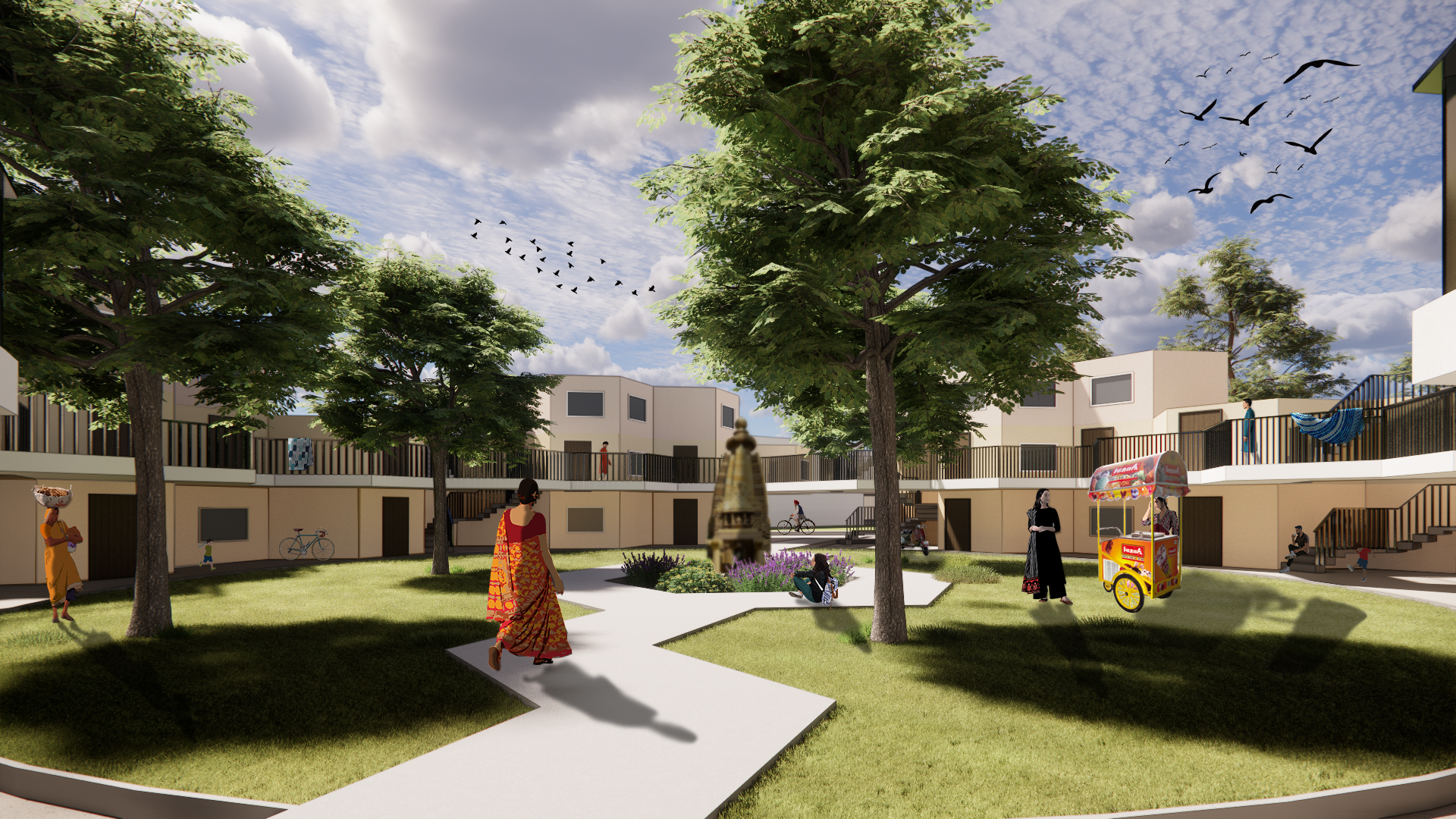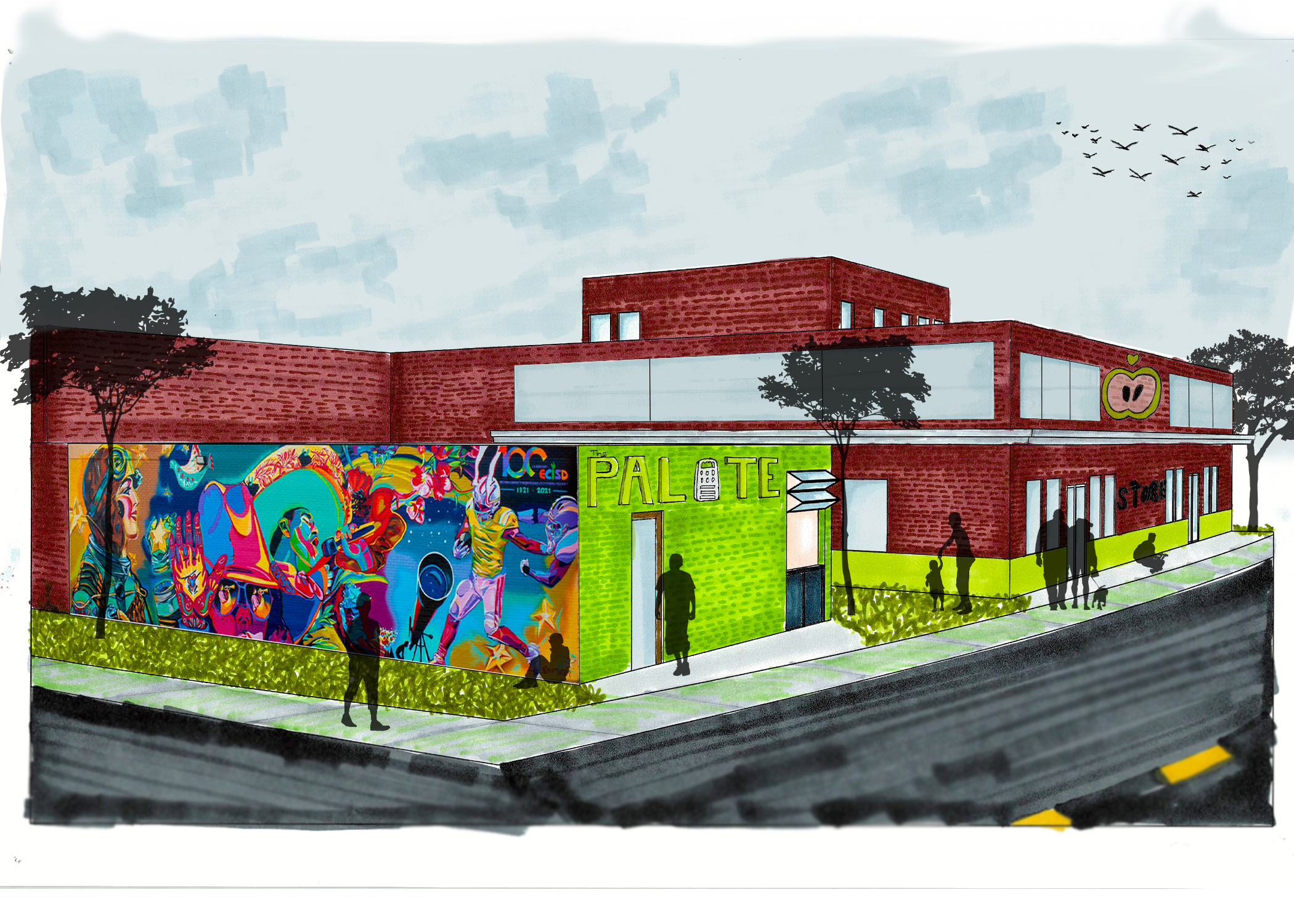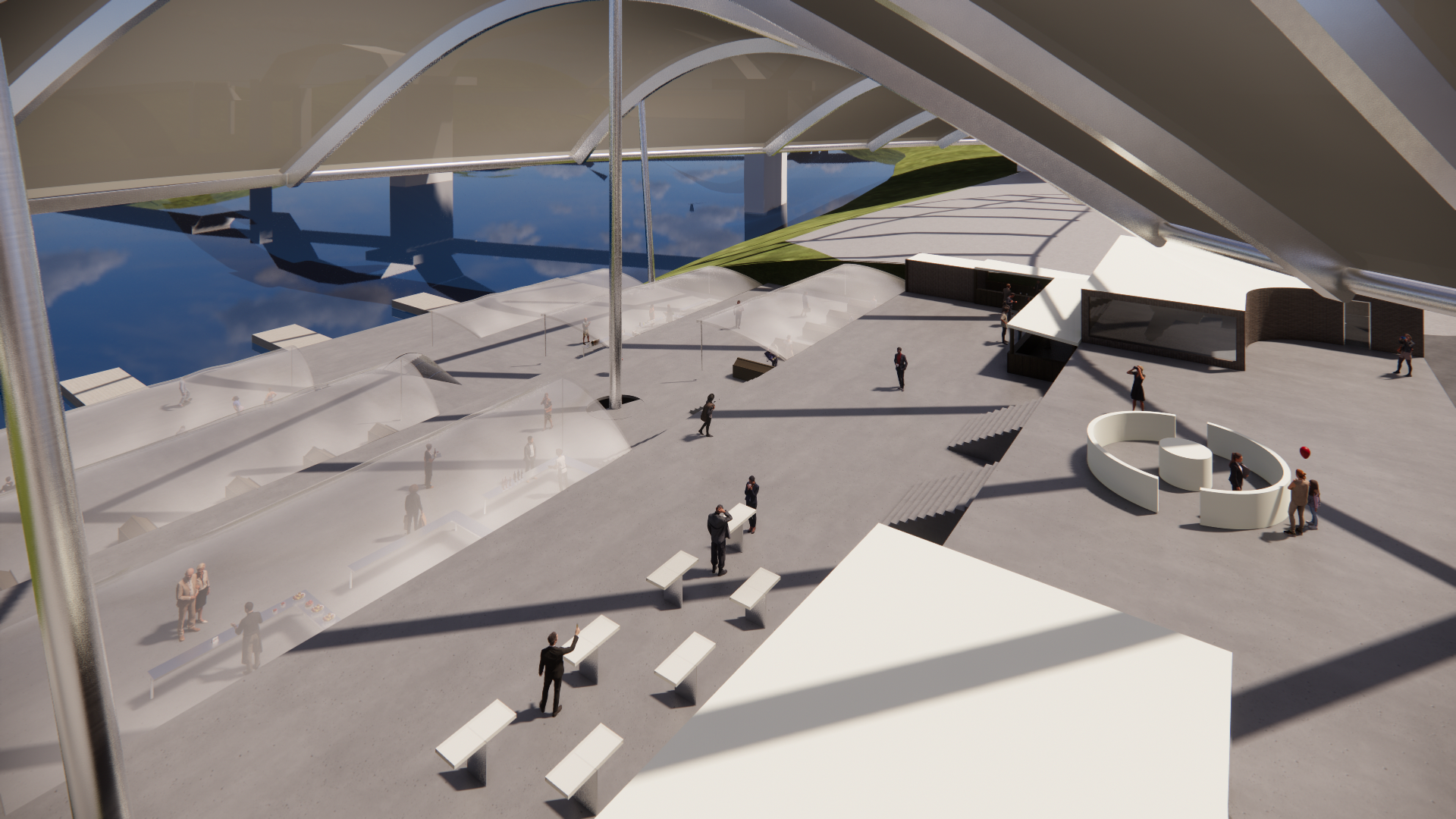
Access & Equity
Access and equity in architecture are crucial to creating inclusive environments that serve all individuals, regardless of socioeconomic status, ability, or background. This subject is significant within both the academic program and the broader discipline as it ensures that design decisions promote social justice, sustainability, and universal accessibility. As a student, I strive to incorporate these principles into my work by considering the diverse needs of future users, and I aim to continue this focus in my future career. I envision contributing to projects that challenge systemic inequities and provide innovative solutions for underserved communities.
The Projects
-

India Housing Project
It all begins with a Hexagon. If you make the hexagons fit like puzzle pieces and use materials that can be built off-site, then locals will only be relocated for a month as their new hoes are constructed at a lower cost.
-

The Store Project
Everyone deserves to go to the grocery store with dignity. The Store aims to give everyone just that. Instead of food stamps at a normal grocery store, The Store offers adults and their children a typical shopping experience. The attached restaurant provides hot meals to the community and allows local businesses to create a foundation.
-

Broadway Terminus Project
Broadway is known for many things, but It's not known for being friendly to your wallets. What I strived for in this project was to make a train station that we bold enough to cap off Broadway while still being a part of its nightlife and being able to house a daily farmers market that anyone could afford for everyone in the city.
Related Reflections
Related Reflections
Educational Access
October 29th, 2024
The profession of architecture holds immense potential to lead society toward a future that’s not only more aesthetically innovative but more inclusive and equitable. As architects, we have a unique responsibility to create environments that aren’t just visually compelling but also genuinely welcoming and accessible for all, regardless of background, ability, or identity. This commitment to inclusive design extends beyond the physical structures we create; it’s about fostering environments where everyone can thrive. For instance, consider the design of community centers—an architect mindful of equity wouldn’t simply focus on beauty but would ensure the building serves as a safe, accessible space for diverse groups. This could mean incorporating features like accessible ramps, multi-lingual signage, or quiet rooms, all of which contribute to a truly inclusive community space that respects various needs and lifestyles.
Equity in architecture also means examining and adopting policies within the profession that foster diversity and inclusion. Historically, architecture has been exclusive, with limited access for certain groups due to economic, cultural, and societal barriers. By establishing equitable policies, we can change this narrative and create fairer opportunities for everyone. Initiatives like recruitment practices focused on bringing in underrepresented voices or scholarship programs that allow students from various backgrounds to enter architecture are crucial. Additionally, mentorship programs that support young people from marginalized communities can help guide new talent, ensuring they feel both supported and valued. This level of equitable engagement is not only morally responsible but will also result in more innovative, empathetic designs because they’ll be informed by a greater range of lived experiences.
Moreover, the language and behavior we use in the field shape the culture of architecture. As future architects, it’s vital to model respect and inclusivity, recognizing that the industry—and the structures it produces—only grow richer when we’re open to a diversity of perspectives. Respectful communication in the workplace or classroom fosters a culture where new ideas can flourish, unhampered by biases or exclusion. Our words and actions, whether speaking with clients, peers, or communities, can set the tone for an environment that values each person’s input and experiences, especially those that come from underrepresented voices.
The profession’s commitment to fairness, diversity, and social justice cannot be limited to an internal culture shift—it has to shape the ways in which we interact with society at large. Architects are in a unique position to design for positive societal change, crafting spaces that not only meet practical needs but also uplift the people who use them. From low-cost housing projects that tackle homelessness to green spaces that promote mental health in urban areas, our work can have a meaningful impact when approached with equity in mind. This profession has the power to make lives better, and as an architect, I hope to contribute to projects that serve all communities, not just the privileged few.
In education, it’s also essential to support various pathways into architecture, especially for students who may not have had access to resources that make an architectural education feasible. Schools can address this by offering scholarships, community outreach programs, and internship opportunities that provide hands-on experience. When students of all backgrounds are given a fair chance to enter the field, architecture becomes more dynamic and diverse. An example of this could be programs like summer architecture camps for high school students from low-income areas, which allow students to explore the field early on, build a portfolio, and even receive mentorship from working architects. Programs like this can inspire students who might not have seen architecture as an option and ensure the profession is accessible to those with the passion and potential to succeed.
This understanding of equity and inclusion will shape my future in architecture by informing the way I design, communicate, and collaborate. I want to prioritize projects and approaches that reflect these values, creating environments that aren’t just impressive but also serve a broader purpose. My goal is to help develop spaces that foster respect, diversity, and community, while contributing to a profession that is accessible, fair, and forward-thinking.
Equity & The Belmont Program
October 29th, 2024
Belmont’s architecture program has built its curriculum and culture on a strong commitment to justice, diversity, and inclusion, mirroring foundational Christian values of respect for all individuals. In my experience as a fifth-year student, I have witnessed and appreciated how these values are not just theoretical principles but are actively embodied in the program’s courses, policies, and relationships. The statement that "the just treatment of individuals made in God’s image is a foundational principle" is evident in how the program emphasizes the worth of every person and fosters a sense of responsibility to advocate for justice and equity within our work and community.
One of the most impactful examples of this commitment has been in our studio projects, where we are often tasked with designing for diverse communities and focusing on accessibility and inclusivity. In a recent studio, we explored projects that required us to address the needs of people with disabilities and those from various socioeconomic backgrounds. Through these projects, I’ve seen Belmont’s dedication to training architects who don’t just design for aesthetics or prestige but prioritize the dignity and needs of all individuals. For instance, I worked on a project where we had to consider how the layout and features could serve low-income families and individuals with mobility challenges. This project pushed me to think more critically about the ways our designs can either uplift or hinder access to essential services, and it reinforced how architecture should reflect empathy and justice, values deeply rooted in the Christian faith.
Belmont also addresses social issues through specific course content. In courses like architectural history and theory, we’ve studied how architecture has both perpetuated and challenged social inequalities over time. We’re encouraged to look at historical examples, like the exclusionary nature of modernist housing or the urban renewal projects that displaced marginalized communities, and to consider how we can learn from these past injustices. This kind of critical reflection in our education is key to understanding our role as future architects and motivates us to prioritize equity in our own practices.
Beyond coursework, I’ve noticed that Belmont’s policies and relationships among faculty and students reflect a commitment to diversity and inclusion. Faculty members create an environment where every student’s voice is valued, and I’ve observed firsthand the support offered to students from diverse backgrounds, especially in terms of mentorship and resources. There is an intentional effort to provide opportunities for everyone, which helps to create a space where students of all identities and beliefs feel respected. This is reinforced by the program’s embrace of open discussions around faith and culture, encouraging us to see how our personal beliefs can inspire our approach to inclusive and thoughtful design.
Furthermore, the program’s efforts to make architecture education accessible to a broader range of students reflect this commitment to equity and inclusion. Belmont offers scholarships and mentorship opportunities that are especially helpful for students who might otherwise face financial barriers. By actively working to support students from underrepresented backgrounds, the program demonstrates its dedication to creating a more diverse field of architecture. These initiatives align with the Christian principles of helping those in need and ensuring that everyone has the opportunity to fulfill their potential. For instance, seeing some of my classmates thrive thanks to these supports has shown me how important it is for the field to embrace a more inclusive mindset, as it ultimately leads to richer, more varied perspectives within architecture.
In all, I believe Belmont’s architecture program makes genuine strides in addressing social injustices within both the profession and education. It goes beyond simply discussing diversity, equity, and inclusion as ideals, embedding them into the program in ways that resonate with its Christian mission of honoring every person as made in God’s image. This has shaped my perspective as a future architect, pushing me to think about how my work can serve people meaningfully and justly, honoring the dignity of every individual while striving to design spaces that uplift and unite.